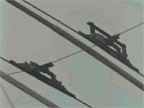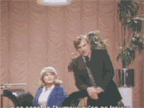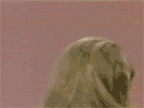


A SITE DEDICATED TO VIDEO SAMPLING ARTISTS
WORKING PRIOR TO 2006
This website was created in 2005 in order to highlight the work of early vamplers and to promote this new art. Now in the 2010's as we upgrade the website, we are still working hard on the ground, pushing this medium into larger and larger public spheres. Keep up the hard work vamplers of the world and please send any relevant information about vampling pioneers, omissions, or additions to: info (at) vampler.net. Thanks - Lex Everheart
VAMPIRES and ETYMOLOGY
Sorry if you have come to this site thinking we would be dealing with the noun 'vampling', term for a child vampire. But vampling's sister meaning is convenient because this is indeed a young art and it does have a tendency to feed from its own likenesses. It can also be considered the child of projects such as "VAMPIRE' (Video And Music Program for Interactive Realtime Exploration / Experimentation (1974-1979), early efforts in live video synthesis at Bell Labs. And of course there is "vamping", another significant sister-word: " To seduce or exploit (someone) in the manner of a vamp (A woman who uses her sex appeal to entrap and exploit men)" - Webster's.




VAMPLERS and VAMPLING
Unlike "VJ"ing (video dj), vampling is video sampling with the audio attached, performed live. This is performed cinema, from infinitely evolving narratives to plastic psycho cut-up chaos. The potential impact of this type of work is enormous -- creatively, politically, and economically.
VAMPLING IS ?
... not the visual accompaniment of music, known now as VJing, for which there is also a long and rich tradition spanning to antiquity (see links). Vampler.net is focusing on the potential of sampling fragments of video/digitized media, sensoral "preliminaries", be they shot or found.
No doubt the technological advances of the last 30 years would have been the dream of early pioneers who sampled, looped, and created new rhythms and meanings with found sound footage for their films such as Henri Storck in the 1930's. And what would audiovisual alchemist Harry Smith have done with these technologies? Now, we are faced with the tools for wide ranges of sensory expression and this, we believe, demands reflection of the aesthetic, social, and political potentials of these technologies that we present largely through a cursory portrait of the approaches of a few vamplers and which we will continue to expand.
We begin with the belief that the particulars of recorded fragments, be they from home movies, a Los Angeles sound stage, or a NASA satellite feed, all have unique inherent properties with specific temporal and affective perspectives. Vampling, with its re-assemblage and manipulation of these space-time fragments, lends itself to radically altering our relationship with moving images. Even in its current early forms, with so many variables, vampling has the power to alter our perspective(s) and our consciousness (more).
